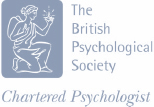Cognitive Behavioural Therapy can be considered to be support that focuses on achieving a solution, is time-limited, collaborative and a pro-active therapeutic approach. In essence, CBT is a talking therapy that focuses on how cognitive elements such as thoughts, attitudes and beliefs influence on how you feel and behave, and how specific skills and techniques can help you change the way you think, feel and react, to be more self-helping.
Cognitive Behavioural Therapy is usually a short-term therapy lasting between 6 and 40 sessions over a period of 1 to 24 months. The exact length and duration of the treatment will vary depending on individual client needs and the presentation (problem area). In contrast to some other therapeutic approaches, CBT primarily focuses on the here-and-now, and tries to identify what is maintaining the current problem and to change this cycle. The idea behind this is that we cannot change our past, but we can address the way we deal with our present, and by doing so, we can positively influence our future. CBT aims to help in the development of new thought patterns and altered behaviour, with the view that this will offer a sense of fulfilment and happiness. In contrast to some other therapeutic approaches, CBT proposes that the power to change lies within each individual client. This means that rather than the therapist being seen as the expert, the client is considered to be the expert. The therapist will work actively and collaboratively with the client to identify unhelpful thinking patterns and destructive behaviour, and then assist in the development of skills and techniques that support change. This way, the client gradually becomes their own therapist, so that they can learn to deal with difficulties even after therapy comes to an end. It is widely thought that the emphasis on supporting the client to become their own therapist is one of the greatest reasons why this kind of therapy yields a significantly lower relapse rate than some other treatment alternatives.
In the UK, Cognitive Behavioural Therapy is considered to be the recommended treatment for a wide variety of difficulties, including depression and anxiety disorder. The National Institute for Health and Clinical Excellence (NICE) has identified CBT as the treatment of choice for a broad selection of presentations within the National Health Service, with this decision being greatly supported by hundreds of research papers from around the world. At present time, CBT is one of the most researched therapeutic approaches available.
On of the biggest studies conducted on Cognitive Behavioural Therapy was done by Aaron Beck and his team in 2005. Aaron Beck, widely considered to be one of the founders of CBT, and the Beck Institute for Cognitive Therapy in the USA, analysed the results of 16 meta-analyses of CBT, that in total covered 332 studies and almost 10,000 participants. The study found that in the treatment of depression, CBT is superior to antidepressants. Furthermore, it was strongly effective for childhood depression and anxiety, as well as adult generalised anxiety, social phobia, post-traumatic stress, depression, panic and agoraphobia. It was also discovered that CBT is effective for treating many other issues such as; eating disorders, anger management, chronic pain, schizophrenia, childhood somatic disorders, and relationship problems.
So how does CBT work?
Cognitive Behavioural Therapy suggests that human experiences can be viewed as a product of four interacting elements known as cognition, emotion, physiology and behaviour. The cognitive element can be further broken down into a cognitive triad consisting of our thoughts, assumptions and beliefs about ourselves, others and the world around us.
Thus if I am feeling tense (physiology) when I am preparing for a presentation at work, it might result in me thinking ‘I’ll get nervous and mess this presentation up, and then everyone will think I’m a fool’ (cognition), which in turn might result in me feeling anxious (emotion) and that might make me stop working and leave my office to go for a walk in the park (behaviour). The purpose of going for a walk could be to ease my tension (back to physiology). With my tension reduced I might be inclined to think ‘I’ve done plenty of presentations in the past, and they have all gone well’ (cognition), and this may result in me feeling relaxed (emotion). In this scenario my behaviour (leaving my office and going for a walk) can be viewed as an action that helped me break out of the vicious cycle. It is not unlikely that my behaviour may also have been motivated by my knowledge (cognition) that taking a break and going for a walk has helped me relax and feel more at ease in the past.
In Cognitive Behavioural Therapy, the primary emphasis is on breaking out of the vicious cycle by altering our cognition and our behaviour. On some occasions it will also be possible to break the chain directly by making changes to our physiology (for instance through relaxation) or our mood (by watching our favourite movie).
Returning to our earlier example, if I alongside my original thought (I’ll get nervous and mess this presentation up, and then everyone will think I’m a fool’) believed that ‘I’m a failure and I will never amount to anything’, then this belief might potentially sabotage all my efforts. Instead of going for a walk I might start crying at my desk, or tell my manager that I feel unwell and go home. CBT recognises that our cognition can be split into a cognitive triad of thoughts, assumptions and beliefs and these three elements can become biased, distorted or unfounded. Typical examples of this include:
- All or nothing thinking (e.g. If I’m not perfect I have failed).
- Disqualifying the positive – Discounting the good things that have happened or that you have done (e.g. That doesn’t count).
- Personalising – Blaming yourself or taking responsibility for something that wasn’t completely your fault, or blaming others for something that was your fault.
- Magnification or Minimisation – Blowing things out of proportion or inappropriately shrinking something to make it seem less important.
- Over-generalising – Seeing a pattern based upon a single event, or being overly broad in the conclusions we draw
- Jumping to conclusions – Mind reading (Imagining we know what others are thinking) or Fortune telling (predicting the future).
- Emotional reasoning – Assuming that because we feel a certain way, what we think must be true (e.g. I feel embarrassed so I must be a failure).
- Labelling – Assigning labels to ourselves or other people (e.g. I’m a failure, I’m completely useless, they are such idiots)
- Mental filter – Only paying attention to certain types of evidence (e.g. Noticing our failures but not seeing our successes)
- Demanding – Using critical words like ‘must’, ‘should’ or ‘ought’ can make us feel guilty /unhealthy negative emotions, or like we have already failed. If we apply ‘shoulds’ to other people the result is often frustration.
Many of these ways of thinking are developed at an early stage in life or picked up along the way from our families, friends or colleagues. They might have made sense at the time of adopting them, but over time they may have become more unhelpful than helpful. Through collaborative work and experiments with your therapist, Cognitive Behavioural Therapy will help bring awareness to your potentially unhelpful thinking patterns and consider alternative ways of viewing yourself, others and the world. Alongside a focus on cognition, CBT will aim to explore your current behaviour and how this might be contributing to, or maintaining your current difficulties. This is often done by conducting behavioural experiments. Behavioural experiments are typically developed in collaboration between the client and the therapist and usually aim to explore how a specific behaviour might be impacting on how the client is feeling.
For example, research conducted on depression suggests that a combination of physical exercise and daily activities that provide a sense of pleasure and achievement, significantly increases happiness for all people. If someone is depressed they might start withdrawing from others and isolate themselves at home on their own, thinking that no one wants to spend time with them. This would potentially cut them off from the possibility of having positive experiences with others, as well as prevent them from challenging their own negative thoughts about themselves, others or the world. In this situation, the therapist could for example suggest that the client monitors their daily activities and rates how much pleasure and achievement each activity provides. Once that a week of activities has been recorded, the client and therapist could then review the results and consider whether the client would benefit from venturing out to meet some new people or perhaps to call up an old friend. Exploring the client’s thoughts about what might happen if he does choose to call up a friend (e.g. ‘They will reject me’), and then setting up an experiment where this call is made, can help highlight negative thought biases (e.g. Jumping to conclusions) and identify whether the client’s concerns are realistic or not. Often the client discovers that their negative thoughts are not as realistic as first expected and it is this realisation that provides a foundation for change.
If you feel you would benefit from Cognitive Behavioural Therapy, we have various therapy rooms in London to help you.
Where to find us in London for Cognitive Behavioural Therapy
Liverpool Street, London
Longcroft House
2/8 Victoria Avenue
Liverpool Street
London
EC2M 4NS
Aldgate East, London
Coppergate House
16 Brune Street
London
E1 7NJ
Stanmore, London
The Highway
Stanmore
HA7
Harley Street, London
1 Harley Street
London
W1G 9QD










